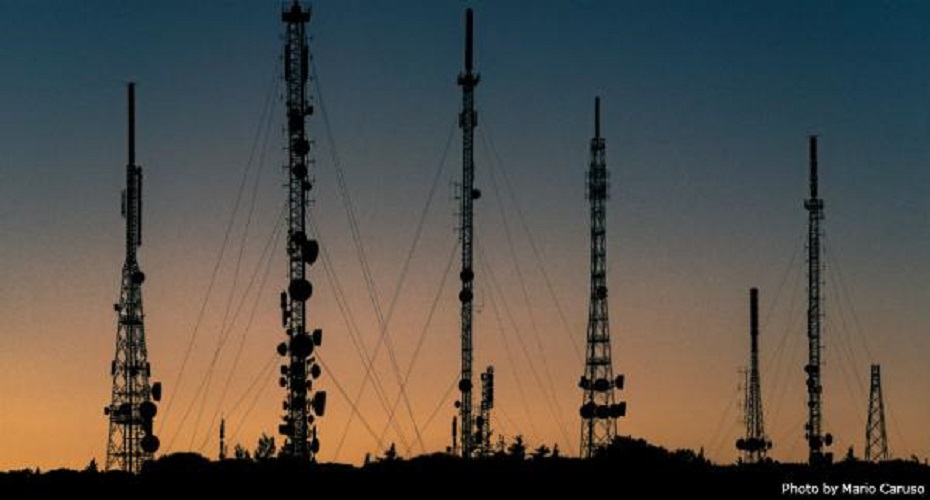Communicating in a crowded electromagnetic environment – how metamaterials can give us more space
A case study by Alastair Hibbinsa and J Roy Samblesa
aUniversity of Exeter
The problem
In today’s connected world, the electromagnetic environment is crucial for many civilian, security and defence contexts, such as developing autonomous systems, communication and healthcare technologies.
Specifically, the challenge is to mitigate for the future congested electromagnetic operating environment which would otherwise limit our ability to efficiently and reliably exploit energy or information in a timely manner. This includes dealing with poor spectrum management (too many devices, not enough available bands), and the impact of intentional disruption, principally from adversary electronic capabilities.
From a military perspective metamaterials are of interest in electromagnetic environments for increased operational effectiveness of vehicles and soldiers; ease of integration into existing infrastructure, i.e. ships, jets; and reduction of size, weight and energy consumption.
Our solution
Our contribution to this challenge is broad and includes novel solutions utilising a range of metamaterial concepts. These include:
- filters for secure compartmentalised facilities and antenna systems and radomes,
- thin and lightweight microwave absorbers for the reduction of radar scattering and clutter,
- novel composites and metasurfaces that enable devices to work effectively in less congested frequency bands,
- reconfigurability of devices to modify operational frequency,
- directional emission of energy and beam steering,
- novel beacon and identification technologies.
Why use a metamaterial?
Metamaterials offer new effects, properties and performance that are derived by understanding the role of multi-scale topology in enhancing the value of a wide range of functional material. They provide a pathway for scientists and engineers to exploit extreme compositional and topological complexity.
Dstl are a core partner of the EPSRC CDT in Metamaterials and University of Exeter’s Centre for Metamaterial Research and Innovation. At least £3bn of MOD investment over the next 10 years is planned to achieve indigenous next generation high performance military assets, including the next generation fast-jet ‘Tempest’. ‘Metamaterial’ scientists address innovation in the electromagnetic environment sector. The coming together of recent seminal developments in high throughout metamaterial simulation and experimentation techniques, together with the latest advanced manufacturing techniques offers the potential for Next Generation Materials Discovery to be business-as-usual within a decade.
There are potentially huge benefits to the civil application sector to be derived from these next generation materials and our challenge is to stimulate a resilient future industrial technology base relevant to defence and security capability.
References
- Bychanok D, Li S, Gorokhov G, Piasotski K, Meisak D, Kuzhir P, Burgess EA, Gallagher CP, Ogrin FY, Hibbins AP. (2017) Fully carbon metasurface: Absorbing coating in microwaves, Journal of Applied Physics, volume 121, no. 16, pages 165103-165103, DOI:10.1063/1.4982232. [PDF]
- Camacho M, Hibbins AP, Sambles. (2016) Resonantly induced transparency for metals with low angular dependence, Applied Physics Letters, volume 109, article no. 241601, DOI:10.1063/1.4971983. [PDF]
- Young E, Dockrey JA, Hibbins AP, Sambles JR, Lawrence CR. (2018) Strong beaming of microwave surface waves with complementary split-ring-resonator arrays, SCIENTIFIC REPORTS, volume 8, article no. ARTN 12102, DOI:10.1038/s41598-018-30555-x. [PDF]
- de Pineda JD, Mitchell-Thomas, Hibbins AP, Sambles. (2017) A broadband metasurface Luneburg lens for microwave surface waves, Applied Physics Letters, volume 111, DOI:10.1063/1.5003571. [PDF]
- Díaz-Rubio A, Hibbins AP, Carbonell J, Sánchez-Dehesa J. (2015) Experimental verification of total absorption by a low-loss thin dielectric layer, Applied Physics Letters, volume 106, pages ---, article no. 24, DOI:10.1063/1.4922801. [PDF
- Parke L, Youngs IJ, Hibbins AP, Sambles JR. (2014) Broadband impedance-matched electromagnetic structured ferrite composite in the megahertz range, Applied Physics Letters, volume 104, no. 22, DOI:10.1063/1.4881186. [PDF]
- Brown JR, Hibbins AP, Lockyear MJ, Lawrence CR, Sambles JR. (2008) Angle-independent microwave absorption by ultrathin microcavity arrays, J APPL PHYS, volume 104, no. 4, article no. 043105, DOI:10.1063/1.2970081

